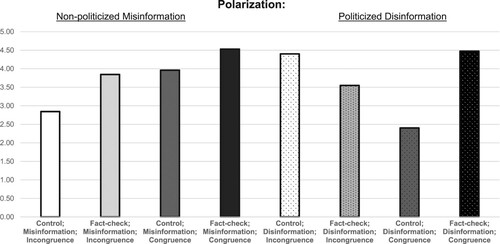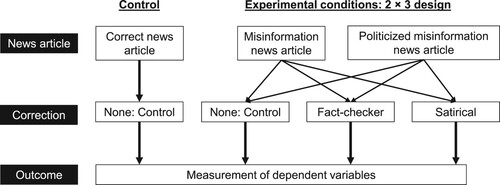Figures & data
Figure 2. The visualized interaction effect on issue agreement (continuous line) and its 95% confidence interval (CI; dotted lines) of being exposed to fact-checking information (regular and satirical combined) relative to exposure to no fact-checking information for different levels of prior attitudinal congruence with the fact-check (x-axis: low to high congruence).
Note: When both sides of the CI are below the y-axis (effect on issue-agreement) at one point on the x-axis (attitudinal congruence), this indicates statistical significance of the effect on issue-agreement of exposure to fact-checking information at that particular level of attitudinal congruence. Datapoints are obtained with the Process-macro 4.0 (Hayes, Citation2022).

Figure 3. Mean polarization scores for the presence and absence of a fact-check message at different levels of attitudinal congruence with the fact-check (+1 SD above and –1 SD below the mean of attitudinal congruence) – specified for unpolarized misinformation and polarized disinformation conditions.

Table 1. Overview of findings.

